Related Research Articles
Xerox art is an art form that began in the 1960s. Prints are created by putting objects on the glass, or platen, of a copying machine and by pressing "start" to produce an image. If the object is not flat, or the cover does not totally cover the object, or the object is moved, the resulting image is distorted in some way. The curvature of the object, the amount of light that reaches the image surface, and the distance of the cover from the glass, all affect the final image. Often, with proper manipulation, rather ghostly images can be made. Basic techniques include: Direct Imaging, the copying of items placed on the platen ; Still Life Collage, a variation of direct imaging with items placed on the platen in a collage format focused on what is in the foreground/background; Overprinting, the technique of constructing layers of information, one over the previous, by printing onto the same sheet of paper more than once; Copy Overlay, a technique of working with or interfering in the color separation mechanism of a color copier; Colorizing, vary color density and hue by adjusting the exposure and color balance controls; Degeneration is a copy of a copy degrading the image as successive copies are made; Copy Motion, the creation of effects by moving an item or image on the platen during the scanning process. Each machine also creates different effects.

Artists' books are works of art that utilize the form of the book. They are often published in small editions, though they are sometimes produced as one-of-a-kind objects.

Xerography is a dry photocopying technique. Originally called electrophotography, it was renamed xerography—from the Greek roots ξηρόςxeros, meaning "dry" and -γραφία-graphia, meaning "writing"—to emphasize that unlike reproduction techniques then in use such as cyanotype, the process of xerography used no liquid chemicals.
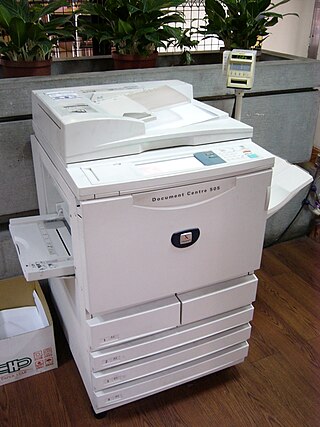
A photocopier is a machine that makes copies of documents and other visual images onto paper or plastic film quickly and cheaply. Most modern photocopiers use a technology called xerography, a dry process that uses electrostatic charges on a light-sensitive photoreceptor to first attract and then transfer toner particles onto paper in the form of an image. The toner is then fused onto the paper using heat, pressure, or a combination of both. Copiers can also use other technologies, such as inkjet, but xerography is standard for office copying.
Carol Heifetz Neiman was an American artist who was a member of the feminist art movement of the 1970s, known for her surrealist and xerox art. She also created etchings, and worked in pencil, pastels, and mixed media and was a painter.
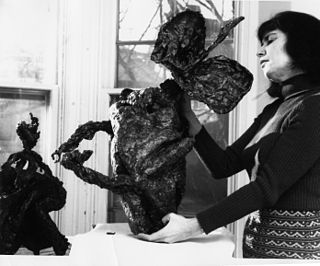
Sarah Jeanette Jackson, was an American-Canadian artist. Jackson first became known for her sculptures and drawings, and then for her photocopy and digital art. She was an early user of the photocopier to make art, and used this practice to embrace mail art.
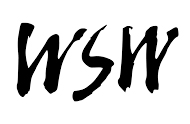
Women's Studio Workshop (WSW) is a nonprofit visual arts studio and private press offering residencies and educational workshops, located in Rosendale, New York.
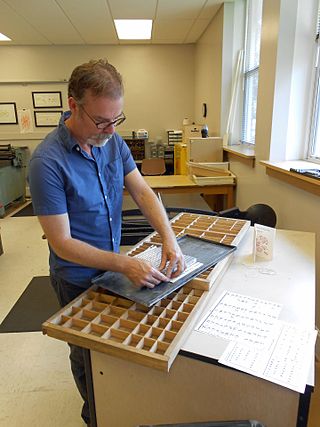
Frank Brannon is a book and paper artist, and the proprietor of Speakeasy Press.
Julie Chen is an American book artist and educator.
The International Society of Copier Artists (I.S.C.A) was a non-profit group founded by Louise Neaderland in 1981, intended to promote the work of photocopier artists who used the copier as a camera with which to scan and print original and experimental signed limited-edition compositions. I.S.C.A advocated for the recognition of copier art as a legitimate art form. The group is best known for producing The I.S.C.A Quarterly as well as for coordinating exhibitions of xerographic artwork, and the distribution of "The I.S.C.A Newsletter". Women made up the majority of the society's membership.
Linda Nishio is a Japanese-American artist whose conceptual pieces focus on self-image and issues of representation, using photographs, text, performance, and film. She taught at the Otis College of Art and Design in Los Angeles.

Linda Lindroth is an American artist, photographer, writer, curator and educator.

Terry Braunstein is a photomontage artist based in Long Beach, California. Her work has used multiple media – photography, installation, assemblage, painting, printmaking, video, sculpture and large permanent public art. She also creates artists' books – some published, most one-of-a-kind artists' books.
Pati Hill was an American writer and photocopy artist known for her observational style of prose and her work with the IBM photocopier. While she was not the first artist to experiment with the copier, her work is distinguished by its focus on objects, her emphasis on the accessibility of the medium, and her efforts to unite image and text so that they may "fuse to become something other than either."

Felicia Rice is an American book artist, typographer, letterpress printer, fine art publisher, and educator. She lectures and exhibits internationally, and her books can be found in collections from Special Collections, Cecil H. Green Library to the Whitney Museum of American Art to the Bodleian Library. Work from the Press is included in exhibitions and collections both nationally and internationally, and has been the recipient of numerous awards and grants.
Sally Blakemore is a paper engineer and pop-up book packager based in Santa Fe, New Mexico. She is best known for NASCAR Pop-up: A Guide to the Sport, which includes two dozen pop-ups and a 12-second sound chip. Blakemore also heads Arty Projects Studio, a pop-up and novelty book packaging company.

Klaus Urbons is a German photographer and xerography printmaker. He is a pioneer and leading figure of copy art in Germany and not only. He founded the Museum für Fotokopie, and is the author and translator of books on the history of Copy Art and photocopiers, as well as a curator and a collector.
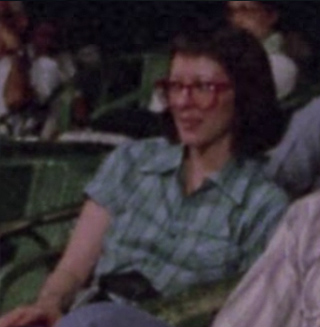
Candy P. Jernigan was an American multimedia artist, graphic designer, and set designer, instrumental in the avant-garde art scenes of Provincetown and New York City in the late 1970s and 1980s. She is best known for her vivid collages of found objects she described as "rejectamenta", presented in diagrams to absurd effect. Jernigan is also known for having designed the covers and jackets of dozens of music albums and books as a colleague of Paul Bacon.
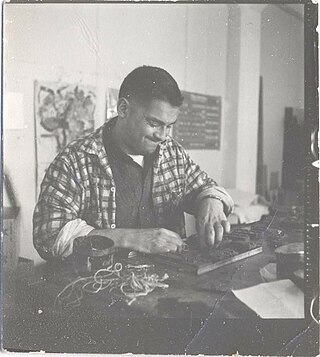
David Ruff (1925-2007) was an American painter and print maker.
References
- ↑ "Louise Neaderland". Vamp & Tramp. Retrieved 7 March 2015.
- ↑ "International Society of Copier Artists". University of Iowa Library Collections. Retrieved 23 April 2015.
- ↑ Science, Lady (17 August 2018). "The Work of Art in the Age of Xerox Reproduction". The New Inquiry. Retrieved 23 August 2019.
- ↑ "Artist in the Age of the Copy Machine: Louise Odes Neaderland". Women Artists News. 13 (2): 17. Summer 1988.
- 1 2 "Laziness and the Invention of Tools". Fungiculture Journal. Retrieved 11 October 2015.
- ↑ Neaderland, Louise. "Empress Bullet: an allegory - Women's Studio Workshop". Women's Studio Workshop. Retrieved 4 August 2016.
- ↑ Neaderland, Louise. International Mail Copier Art Exhibition. Nova Scotia. OCLC 81534595.
- ↑ Witte, Mary Stieglitz (1993). "DOCUMENT RESUME" (PDF). Retrieved 20 May 2018.
- ↑ "Jaffe Center for Book Arts". www.library.fau.edu. Retrieved 15 January 2017.
- ↑ Neaderland, Louise. "Where Could the Dark Matter Be?". Vamp and Tramp. Artist's book. Retrieved 9 April 2018.
- ↑ Neaderland, Louise. "Original Copies". Vamp and Tramp. ISCA and Bone Hollow Press. Retrieved 9 April 2018.
- ↑ Neaderland, Louise. "Collection". The Metropolitan Museum of Art. Retrieved 15 January 2017.
- ↑ "A force on the Miami art scene, Ruth Sackner dies at 79". Miami Herald. Retrieved 13 October 2015.
- ↑ "Jaffee Center of Art Book Art" . Retrieved 23 April 2015.
- ↑ Jessica Brady. "Louise Odes Neaderland - Artists' Books - Research Guides at Harvard Library" . Retrieved 16 March 2015.
- ↑ "Shock and Awe :Bibliotheca Librorum Apud Artificem : Library for the artist's book, Sydney Australia".
- ↑ Walker, John A. (2006). "Copy This! A Historical Perspective on the Use of the Photocopier in Art" (PDF). Retrieved 21 May 2018.
- ↑ "Louise Odes Neaderland - Women's Studio Workshop". Women's Studio Workshop. Retrieved 4 August 2016.
- ↑ "Archived copy". Archived from the original on 2015-04-03. Retrieved 2015-03-16.
{{cite web}}: CS1 maint: archived copy as title (link) - ↑ "Records of the International Society of Copier Artists - the University of Iowa Libraries".
- ↑ "Louise Neaderland" . Retrieved 16 March 2015.
- ↑ Neaderland, Louise Odes (1986). The ISCA Quarterly: First Annual Bookworks Edition (Vol. 4, no. 4. ed.). New York, New York: International Society of Copier Artists.
- ↑ Neaderland, Louise Odes (1987). The ISCA Quarterly: Second Annual Bookworks Edition (Vol. 5, no. 4. ed.). New York, New York: International Society of Copier Artists.
- ↑ Scott, Joanna (January 1988). "You can't judge a book by its cover". Afterimage. 15 (6): 1, 4–5. doi:10.1525/aft.1988.15.6.4.
- ↑ Proctor, Roy (April 14, 1990). "1708 provides a showcase for photocopier art". No. Saturday Green Section. The Richmond News-Leader.
- ↑ Art ex libris. OCLC 34056111.
- ↑ "The Flip Book Show" . Retrieved 23 September 2015.